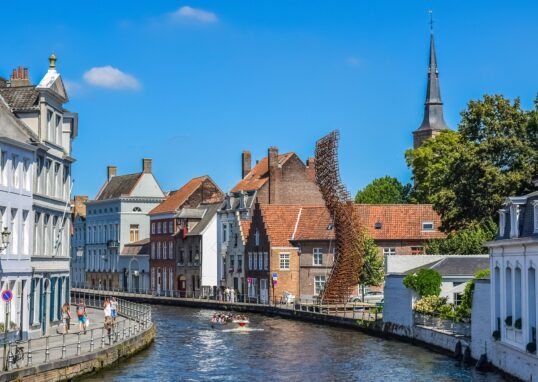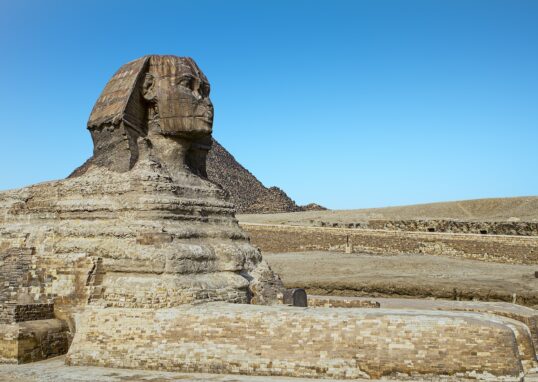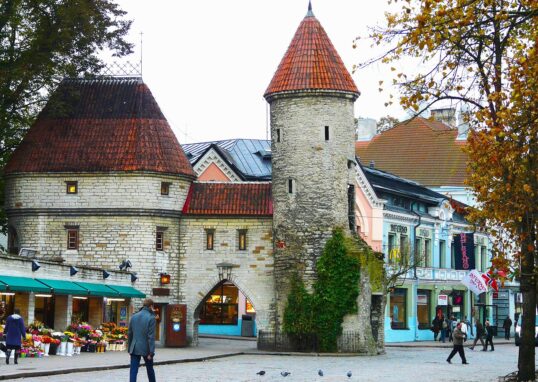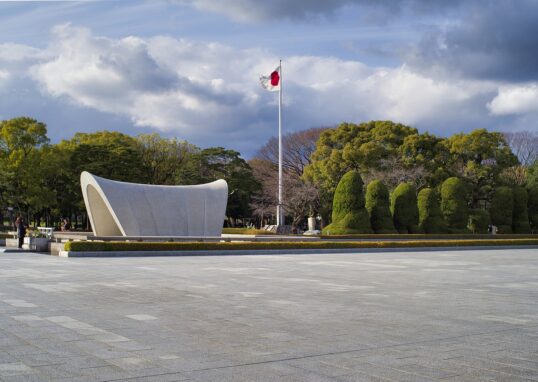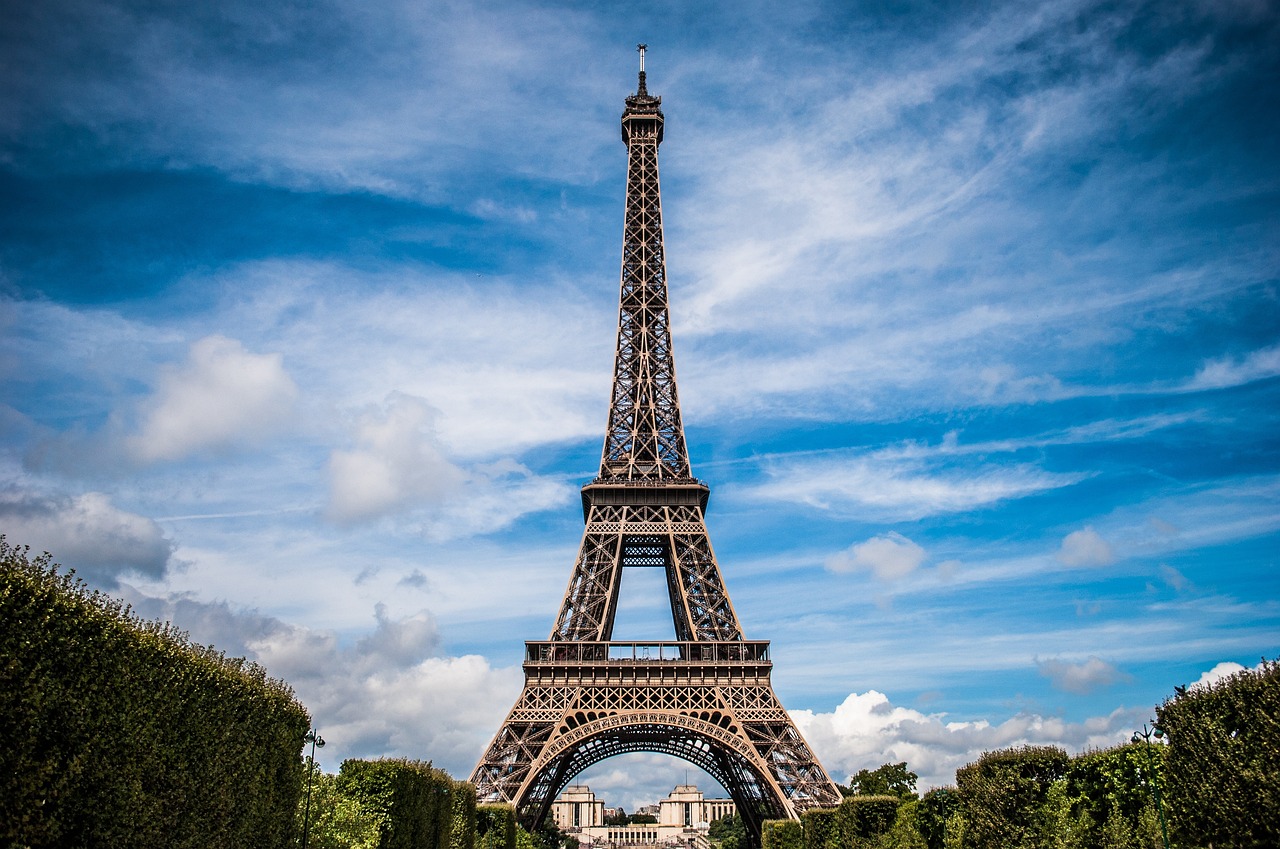
Symphony of Rivets and Romance: The Eiffel’s Whispered Secrets
The Eiffel Tower, Iron Tower, Paris
The Eiffel Tower is situated in Paris, France. It is one of the planet’s most well-known landmarks and represents the French people’s cultural heritage and innovation. The Eiffel Tower, a Parisian icon and an engineering marvel of the 19th century, stands over the city’s landscape with its refined iron latticework structure. Constructed by Gustave Eiffel’s company between 1887 and 1889, the tower was meant to be transitory, the focal point of the 1889 Exposition Universelle celebrating the centenary of the French Revolution. Whereas most critics ridiculed its brash, industrial appearance as an eyesore, the tower became a global symbol, symbolizing France’s technological and cultural dominance. It was the world’s tallest man-made structure until 1930 at 330 meters (with antennas) and is today the tallest building in Paris. Its construction—7,300 tons of iron, 2.5 million rivets, 60 tons of paint—was a work of precision, erected in over two years with barely a mishap, a testament to Eiffel’s newfangled approach.
Besides its beauty, the Eiffel Tower was intended for scientific purposes. Gustave Eiffel, an ardent engineer, employed the tower for meteorological research, tests of aerodynamics, and even as a radio transmitting station. During World War I, its strategic peak was used to intercept the communications of enemy forces, making its operational value official. Today, it has broadcasting antennas and sends radio and television signals around the capital. Its three tiers offer unprecedented views: the first holds glass floors and a fine dining restaurant; the second houses Jules Verne, a Michelin-starred eatery; and the highest observation deck features a breathtaking 360-degree panorama that draws nearly 7 million visitors annually.
Visiting the Eiffel Tower
Height
The Eiffel Tower, with its antennas, is 330 meters high (1,083 feet) and was the world’s tallest man-made structure until New York’s Chrysler Building opened in 1930.
Construction
The tower, designed by engineer Gustave Eiffel, was built in 1889 at the Exposition Universelle (World’s Fair) to symbolize the 100th anniversary of the French Revolution.
Materials
The weight of the Eiffel Tower is approximately 10,100 tons, made of wrought iron.
Tourist Attractions:
First Level (57 meters/187 feet):
Experience. The first level is the only one with a see-through floor that reveals the straight-down view. Its exhibitions tell the monument’s past and how it was constructed.
Dining Guests can enjoy a meal or a snack while admiring the Paris skyline from the café and shops on the first level.
Second Level (115 meters/377 feet)
Viewpoint: Some notable Parisian landmarks here include the Louvre, Notre Dame, and the Seine River.
Dining The second level is home to the famous Le Jules Verne restaurant, which offers gourmet French cuisine and spectacular views.
Third Level (276 meters/906 feet)
Experience
Its highest accessible level provides a platform for tourists to view the whole of Paris, even sometimes on a clear day, which stretches around 70 km. Moreover, it is also possible to catch a glimpse of the work of Gustave Eiffel, a museum piece from the main hall that has been kept intact, among other things.
Resistant even to first disbelief, the tower’s durability mirrors Paris itself: it weathered Nazi occupation (with resistance members cutting elevator wires to impede Hitler’s ascent) and modernization threats, becoming a UNESCO World Heritage contender.
Far from a symbol or a lure for tourists, the Eiffel Tower is a living expression of human ingenuity. It entertains, from New Year’s fireworks to light sculptures to celebrate international causes, keeping it current through generations. While writer Guy de Maupassant—who famously despised the tower—ate there daily ironically because “it was the one place in Paris where you couldn’t see it,” the tower’s inescapable presence has been its own best success. A combination of science, art, and history, the Eiffel Tower is not just an engineering feat, but a timeless tribute to the daringness of dreams.
Illumination and Light Show
Lighting: The Eiffel Tower is illuminated with over 20,000 light bulbs every other evening from dusk to 1 a.m. (in summer until 2). This is a spectacle of beauty against the night sky.
Sparkling Lights: At sunset, the light on the tower goes on and off in a five-minute sequence, like a twinkling star in the sky, which attracts one million flashes of camera lenses in the city.
Events and Exhibits
Seasonal Events
The Eiffel Tower hosts various activities throughout the year, such as temporary art exhibits, live music performances, and special light shows during national celebrations.
Temporary Exhibitions
The ground floor usually hosts temporary art, history, and science exhibitions, which provide a cultural experience along with the tower itself.
The Surrounding Area
Champ de Mars: The area with big greenery in front of the park is the best spot for a picnic and photography, which is among the best.
River Seine: Boat cruises through the Seine, which offer amazing views of the Eiffel Tower from the water, are the preferred mode of transport for many tourists.
Architecture and Design
Engineering Marvel: Initially, the Eiffel Tower was belittled for its novel design, but it became something thought of as new and creative. It was built from 18,038 iron fittings by 2.5 million rivets.
Wind Resistance: Even though it is long and narrow, the Eiffel Tower is made according to all safety standards for buildings in severe weather, and its top leaned a few centimeters during a gale-force wind.
Practical Information:
Optimal Visiting Time: It is preferable to visit very early in the morning or late evening, when the crowds can be avoided and the city can be seen at sunrise or sunset. The best view can be experienced during night visits, when the tower is lit at night.
Entrance Ticket: It is better to reserve the tickets once a week, and also online when there are large numbers of visitors. Tickets start from 1 Euro and go up to the pricing level of your choice among various stairs and an elevator.
Accessibility: People with disabilities can use the elevators to the second floor.
Cultural Significance:
Global Icon: The Eiffel Tower is a famous location from movies, books, and other forms of art, which has made it one of the symbols of Paris only but also of romance and adventure.
Historical Impact: Among the first planning works, the Eiffel Tower was initially an object that was meant to be demolished, but due to its purpose as a radiotelegraph station, it was instead it was saved.
Tips for Visitors:
Photography: The Trocadéro Gardens, the Champ de Mars, and a Seine River cruise are excellent places to shoot amazing photos of the Eiffel Tower.
Dining: Le Jules Verne is a great restaurant and a perfect place where people have to make reservations if they’d like to eat there and spend a little money on food with a view. So, if you want to have the trip of a lifetime to Paris, then you should be sure to do that.
Souvenirs: The shop sells various miniatures, including large, small, and other types presented in authentic designs, as well as new, unique ones, such as croissants, which are crafted using French culinary craftsmanship.
Paris Eiffel Tower
The Eiffel Tower is widely perceived as the city’s most identifying symbol of Paris and one of the most famous buildings in the world. It stands at Champ de Mars as an ecological centerpiece, attracting several million visitors annually with its unique appeal and architectural beauty. To access this monument, passengers can use their lift shafts or take the stairs, which allow them to explore the balcony and experience the structure of this romance with iron. Ascension to the tower by elevator is also an option, or the stairway can be used for a more direct experience, like they go deep into the iron construction, ironwork, or whatever, to learn as they are intrigued by its fascinating history. A transparent floor, designed to simulate an image of the ground below, is located at the first level. Some restaurants and shops provide a simple pastime for an individual or group. The next one is particularly popular for its breathtaking sights like the Seine River, the Louvre, the Arc of Triomphe, etc., because it is a place made for taking pictures. The Eiffel Tower’s light show begins at sunset with a twinkle of thousands of lights, creating a breathtaking background that best fits those who have seen it.
Whether it is dining in the world-renowned 58 Tour d’Eiffel restaurant on the first level or having a picnic in the nearby Champ de Mars park, you are forced to be involved in the experience, which allows you to soak in the romantic atmosphere that Paris is so famous for. Travellers mostly go to Paris to visit the Eiffel Tower and stay in a hotel near the Eiffel Tower.
Conclusion
The locale also has tourist attractions like the Trocadéro Gardens and the Musée du quai Branly. A trip to the Eiffel Tower will likely be a fun and educational experience. With its timeless elegance and captivating allure, the Eiffel Tower remains a must-see destination for travelers seeking to experience the beauty and romance of one of the world’s most beloved cities. The Eiffel Tower is a “must-see” attraction and an event that describes Paris. If you are looking for the best spots to visit, you can’t miss the Eiffel Tower, which is always a good idea in Paris. It can be either a study tour, a business tour, or a family tour. Flock to this park to find some relaxation and peace.






